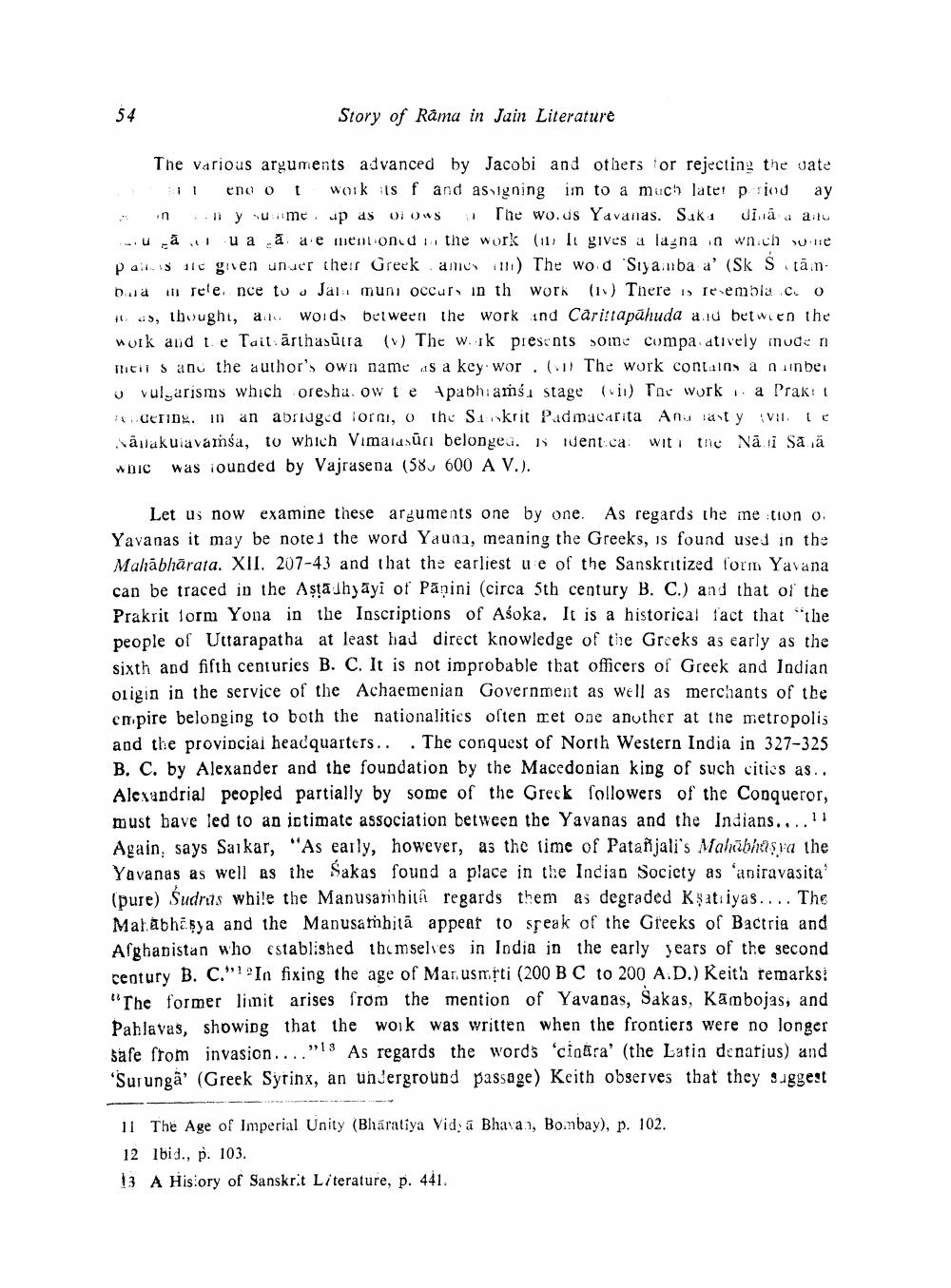________________
Story of Rama in Jain Literature
1 eno ot
ay
11
33
Pas
The various arguments advanced by Jacobi and others for rejecting the date work its f and assigning im to a much later period. ny sume up as Oi Ows XX The wo.us Yavanas. Suka dina a a alo uāua a are mentioned the work ( It gives a lagna in which some e given under their Greek ames (m) The word 'Siyamba a' (Sk Stan Dad in rele. nce to a Jain muni occurs in th work (1) There is re-embla .co itas, thought, and words between the work and Carittapahuda and between the work and the Tait arthasutra (v) The work presents some compa atively mode n mens and the author's own name as a key wor. (v) The work contains a number o vulgarisms which oresha, ow t e Apabhiamś stage (vi) The work a Prak: t dering. in an abridged torni, o the Sanskrit Padmacarita An asty VII te Nalakulavamsa, to which Vimalasūri belonged. is identica with the Nai Saā whic was founded by Vajrasena (58, 600 A V.).
54
in
Let us now examine these arguments one by one. As regards the me tion o Yavanas it may be noted the word Yauna, meaning the Greeks, is found used in the Mahabharata. XII. 207-43 and that the earliest use of the Sanskritized form Yavana can be traced in the Aṣṭadhyayi of Panini (circa 5th century B. C.) and that of the Prakrit form Yona in the Inscriptions of Aśoka. It is a historical fact that "the people of Uttarapatha at least had direct knowledge of the Greeks as carly as the sixth and fifth centuries B. C. It is not improbable that officers of Greek and Indian origin in the service of the Achaemenian Government as well as merchants of the empire belonging to both the nationalities often met one another at the metropolis and the provincial headquarters... The conquest of North Western India in 327-325 B. C. by Alexander and the foundation by the Macedonian king of such cities as... Alexandrial peopled partially by some of the Greek followers of the Conqueror, must have led to an intimate association between the Yavanas and the Indians....11 Again, says Saikar, "As early, however, as the time of Patanjali's Mahabhagya the Yavanas as well as the Sakas found a place in the Indian Society as 'aniravasita' (pure) Sudras while the Manusamhita regards them as degraded Kyatsiyas.... The Mahabhiya and the Manusathhità appear to speak of the Greeks of Bactria and Afghanistan who established themselves in India in the early years of the second. century B. C. In fixing the age of Man.usm.fti (200 B C to 200 A.D.) Keita remarks: "The former limit arises from the mention of Yavanas, Šakas, Kambojas, and Pahlavas, showing that the work was written when the frontiers were no longer. safe from invasion...."13 As regards the words 'cintra' (the Latin denarius) and 'Surunga' (Greek Syrinx, an underground passage) Keith observes that they suggest
11 The Age of Imperial Unity (Bharatiya Vid, a Bhavan, Bombay), p. 102.
12 Ibid., p. 103.
13 A History of Sanskrit Literature, p. 441.




